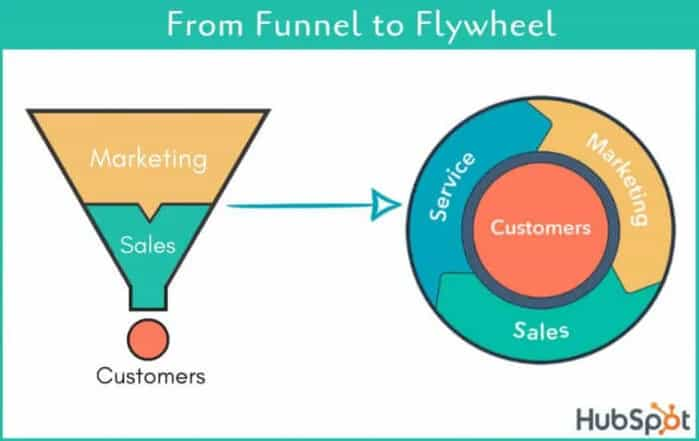-
Digital Marketing
We help you to use your digital potential. For a strong positioning, more visibility and more leads.
Get Growth ready
With the BEE.Transformance model, we bring continuous and profitable growth to your company. A new mindset for your team.
Industries
We transform your challenges into opportunities through the experience we have gained from projects in these industries.
-
HubSpot Services
As a HubSpot Diamond Partner, we help you implement your digital growth strategy with a focus on performance - by implementing and integrating new and existing systems as well as 3rd party apps.
HubSpot Thought Leader
As a HubSpot Diamond Partner with +50 certifications, host of the HubSpot User Group Zurich, HubSpot Trainer and HuSpot User Champions, you have access to in-depth HubSpot expertise.
HubSpot Solutions
The BEE.Theme offers you more creative freedom than any other theme on the market. Whether you're a beginner or a professional, a creative mind or a digital agency - with the BEE theme, you can easily unleash the maximum power for your pages in HubSpot CMS.
-
BEE.Blog
Knowledge around digital marketing, digital sales, technology, data intelligence and employees.
Knowledge Base
Pure knowledge: everything essential concentrated, compact, digitally prepared for you and ready to download.
What is inbound?
The most effective way to successfully combine digital marketing and digital sales.
-
BEE.Team
The BEE.Performers: many different characters - with one thing in common: the fascination for a digital world.
References
More than 100 large and small companies have already started with BEE: to more visibility, more performance, more growth.
Invest
Participate in the growth of BEE and become part of the BEE Growth Story by purchasing Digital Share Tokens.
We're hiring
Become a BEE.Performer! Are you ready for your own transformation?
Hurry Up With Your Migration To GA4 (Google Analytics 4)
Did Google Analytics 4 (GA4) sneak up on you? Or have you been aware of the impending changes for a while, but other priorities have kept it out of your focus lane? Well, at the time of publishing this article, the transition from Universal Google Analytics to GA4 will have already taken place, and there's no going back.
With an improved user experience (UX) and many new features, you'll now have a new way to look at data and make impactful business decisions. But if getting started is holding you back, we're here to help. Save yourself the headache and head over to our GA4 migration service page — we'll handle the whole migration for you or work alongside you to develop a tracking concept. Alternatively, keep reading to learn more about GA4.
%20%7C%20DE.jpeg)
Photo by Chris Briggs on Unsplash
Understanding Google Analytics 4
Change may be scary but keep an open mind here. The latest update from Google is actually far more aligned with what we try to do as inbound practitioners.
Google Analytics 4 will provide more insight into the whole lifecycle of the customer journey. What does this look like? Well, it means that you can expect to see data after you've acquired a customer — retention, monetisation and engagement.
Taking into account changes in consumer behaviour as well as global online privacy policies, Google's upgrade addresses the inefficiencies of the older model, specifically that the previous analytics solution doesn't offer a comprehensive cross-platform overview of the entire customer journey and experience.
Using machine learning, the new Google Analytics will surface cross-platform insights with a firm focus on privacy while providing information on how customers are interacting with your content across platforms and devices.
Google Analytics 4 (GA4) features and benefits
AI-based insights aren't new, but GA4 takes things to a new level by unlocking a series of sophisticated features that provide an unprecedented depth to your data interpretation:
Automated data trend alerts: GA4 will work as your personal data analyst — 24/7. By constantly monitoring your website's data, it identifies significant trends, fluctuations, or anomalies in real-time. You'll receive immediate notification of any crucial changes, enabling you to quickly adapt your marketing strategy.
Churn probability analysis: In the world of inbound sales and marketing, customer retention is as important as acquisition. GA4 provides insights into churn probability, predicting the likelihood of customers ceasing business with you. With this level of forecasting, you can get far more proactive about retaining at-risk clients and improve satisfaction and loyalty.
Enhanced predictive metrics: Besides churn probability, GA4 offers a suite of predictive metrics that forecast potential customer behaviours and trends. This valuable foresight can inform your inbound marketing strategies, enabling you to customise your efforts for maximum impact and ROI.
With GA4, you'll be able to truly elevate your data analytics and take advantage of actionable insights and predictions, making for savvy business decisions.
The importance of data in inbound marketing
Data may feel a bit like a "buzzword" in the digital age, but it's truly the backbone of inbound marketing. Why? Well, it's simple. Inbound marketing isn't about pushing your offering onto anyone and everyone. It's about attracting those customers who are already in search of what you have to offer. And how can you tell who these customers are? How do you tap into their preferences and online behaviour? You guessed it — data!
Data will tell you where your customers prefer to hang out online, what their interests are and the problems they're trying to solve. Data is the blueprint for your customers' actions and thoughts, and it allows you to create the type of content that will resonate with them.
This is where GA4 steps into the picture; it lets you delve into your customer's journey from the moment they land on your site to the moment they make a purchase, sign up for your newsletter and so forth.
But here's the kicker, GA4 goes one step further. With its predictive metrics, it doesn't just tell you what your customers have done; it gives you a pretty good guess at what they're likely to do next. And when you know what your customer is going to do before they do, you're always one step ahead. You can tailor your content, optimise your campaigns, and be there with the right message at exactly the right moment. This is a prime example of how data can drive your inbound marketing strategy.
Comparing GA4 with past versions of Google Analytics
If you're familiar with the older versions, you might be thinking, 'Hey, they worked fine; why change anything?' Once you look into things, however, you'll see that there are some necessary and beneficial improvements.
The older versions of Google Analytics - let's call them the 'classics' - did a decent job of providing us with useful data about our customers. But that's not enough anymore. Not in an ultra-competitive digital landscape where knowing your customer is the difference between soaring high or falling flat.
GA4 is built on an entirely new, more flexible foundation. While the classics were session-based, GA4 is event-based. This means instead of just tracking sessions or pageviews, GA4 tracks every single interaction users have with your site. Whether they're watching a video, clicking a link, or scrolling down a page, GA4 is keeping tabs.
Another massive game-changer is the integration of AI. GA4 has taken machine learning to the next level, providing you with predictive insights into customer behaviour.
And let's not forget about cross-platform tracking. In the past, if a user visited your site on their phone and later on their laptop, Google Analytics saw them as two different users. That's not the case anymore; GA4 tracks users across different devices and platforms, giving you a more holistic view of the user journey.
In a nutshell, while classic Google Analytics did a good job, GA4 does it better. Smarter, more detailed and certainly more future-proof, this upgrade will give you the insights you always needed.
Summary of key differences between Universal Analytics and GA4
- Shiny new UX: GA4 has spruced up the user experience, meaning your old familiar metrics are tucked away in fresh locations. It may take a bit of exploring, but they're all in there.
- Goodbye, old metrics. Hello, engagement: GA4's spotlight is firmly on engagement metrics. It's time to switch gears and dive deep into understanding how users are interacting with your site.
- Bounce rate, who?: Brace yourselves because bounce rate is a thing of the past. Instead, say hello to metrics like engaged sessions, average engagement time per session, and engagement rate. It's a whole new world of data!
- Event-based measurement model: GA4 is bringing events into the limelight. You have the reins to customise them as you see fit, giving you a more detailed picture of your users' behaviours.
- Standard reports are MIA: If you're hunting for your standard reports, you'll find they've been replaced. But don't sweat it because GA4's 'Explore' tab lets you play around with different reporting templates or craft custom reports.
- A learning curve that's worth it: Yes, it's new. Yes, it's different. But once you're past the initial adjustments, GA4 becomes a familiar and immensely powerful tool in your digital marketing arsenal. It's the future of data, and it's here for you to seize.
Preserving your historical data
Your historical data is a treasure trove of insights, and as such, it must be preserved. It offers a reflection of your business's journey, it's wins, losses and everything in between. Historical data inform your ideas about what, what doesn't and why.
So, how do you migrate to GA4 and keep this data safe? Well, the good news is that the shift from Google Analytics to GA4 doesn't make your existing data vanish into the abyss. Your Universal Analytics property will still be there, with all the data intact for at least six months after July 1st, 2023, according to Google. You won't, however, be able to collect new data using the old format once you've switched over. This is because the new metric set is considerably different.
There is no direct' data import' function in GA4. You can't take all your old data and dump it into your new GA4 property. But remember, GA4 is about future-proofing your data strategy, not erasing the past.
To get started, make sure you've got a full backup of your existing data. Download key reports, save important figures, and anything that's critical to understanding your historical performance.
Your GA4 migration handled
We're offering a stress-free journey to GA4 migration. With every business being unique, we sit down with you and create a tracking concept that aligns perfectly with your goals and needs. Since we take personalisation very seriously, we take every measure to ensure your migration is effective, taking care of all the nuts and bolts and ensuring everything runs smoothly.
At BEE, we want to see your business make the most of GA4. That's why we go above and beyond to ensure you're confident in your understanding of the migration and are able to interact with the new platform and its features. Start a conversation with an expert on our team today, and don't delay your transition to GA4.
Comment
Related Posts

Sales Funnel or Flywheel? How To Generate More Inbound Leads
Lanny Heiz | 15 Jul 2021
Most marketing and sales professionals are familiar with the sales funnel. Essentially, it's the journey a customer takes as they become more and more aware of your ...
reading time: 7min
Zum Blog

What is Growth Marketing?
Florian Schneider | 1 Jul 2021
In the past, marketers would invest most of their energy and resources in mass media campaigns that mainly targeted a top-of-the-funnel audience through a select number ...
reading time: 6min
Zum Blog

Why Your Company Really Needs Digital Analytics
Dominik Brunner | 27 May 2021
It's 2020, and markets are expecting 2.05 billion digital buyers to be making their purchases online. For companies looking to thrive in the ever-growing digital ...
reading time: 7min
Zum Blog
